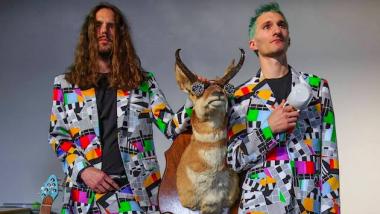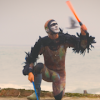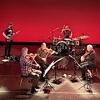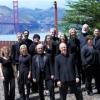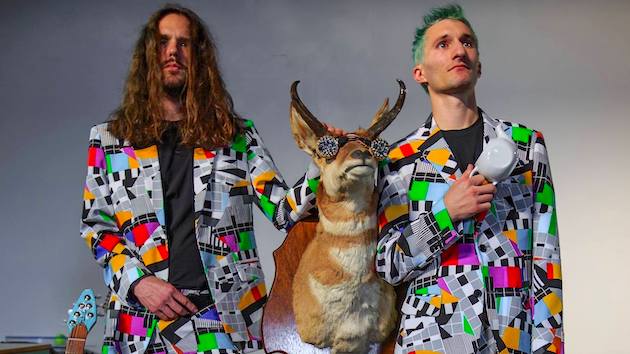
If you want to know what The Living Earth Show (guitarist Travis Andrews and percussionist Andy Meyerson) is up to in any season, think of your aural idea of classical music. TLES is probably doing something completely different from that.
Andrews and Meyerson are not being strategically oppositional in their experiments, although they do invite artists to collaborate who let them be self-critical. And if you’ve seen a show of theirs, you know that they can be funny: They don’t at all take themselves too seriously. Instead, they are commissioning composers who they think are saying something interesting and worthwhile, and adapting their approach to let them say it in as unmediated a way as possible. Meyerson keeps coming back to the image of the toolbox, which is both possible musical sounds and something like musical style. Flexibility is key.
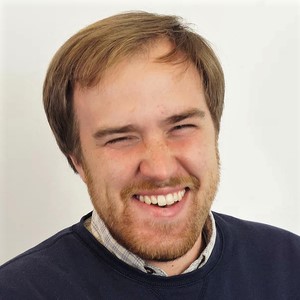
“I personally have a very strong distaste for the system and these [classical music] institutions as they exist traditionally,” says Meyerson. “I think they do a great job of keeping people out on purpose. You know, we used to describe ourselves as a classical music ensemble. And in the past five to seven years, we’ve transitioned into thinking of ourselves as an experimental music group. And what we mean by that is, our job is to put things together that might not otherwise be in the same place or the same combination, and then let’s see what happens. Fundamentally, it’s to give people the tools to do something ambitious, without knowing what’s going to happen.”
TLES has not cancelled their 2020-21 season. Instead, the duo has reimagined the concerts as digital, multimedia productions that each have an accompanying film. The productions are ready to be transferred to live concerts as soon as that is practical. The first one of these shows has already premiered and it’s the only one that was commissioned with the present pandemic in mind. Titled Music for Hard Times, it’s a concert-length work by Danny Clay, with a companion ambient film created by Jon Fischer.
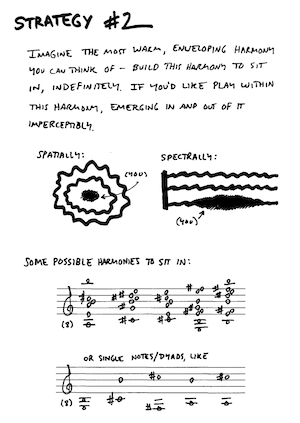
“Danny Clay is such a natural collaborator in determining what music can do to support other musicians, support other voices, and be a flexible presence within that,” Meyerson says. “Danny’s music is resonant with folks who are comfortable in the institutional contemporary music tradition and folks who aren’t. It is very easy to listen to. It’s really pretty. Danny is comfortable trafficking in a kind of cathartic, beautiful musicmaking, that is accessible (not as a bad word). And we’ve worked with him enough to feel as though he’s part of the family — like we’re a trio now. And so for this project we asked, ‘Is it possible to create music to make people feel better?’ What if that were the foundational premise of the work as opposed to the byproduct? And we’ve worked remotely with him before.
“This score is a series of strategies for us to create a sample library that Danny will then create works with. And so we share these gigantic Logic[Pro] files back and forth, all these things that we’ve recorded, and then he compiled them into this piece.”
The piece premiered online, hosted by Nadia Sirota on her show Living Music.
Other productions scheduled for future release in this format, as an album and a film, include:
A Kind of Ache (featuring composer Sarah Hennies and visual artist Terry Berlier)
LYRA (featuring composer Samuel Adams and Post:Ballet)
Shahnameh: Book of Kings (featuring composer Sahba Aminikia and filmmaker Kevork Mourad)
Idea to Life (Success Stories) (featuring composer Adrian Knight)
COMMANDO: True Stories of Real Musicianship (featuring vocalists Juba Kalamka, Lynn Breedlove, Honey Mahogany, Drew Arriola-Sands, and Krylon Superstar)
It was, of course, easier for Andrews and Meyerson to put the TLES season together this way than it would be for other organizations, but that’s because of the way they were set up from the beginning. Says Meyerson:
One of the things that makes [Living Earth Show] nice is that we’re a lot smaller not only in terms of our organization but also instrumental forces. So Travis and I [often] work with a lot of other musicians, but as a duo we can work separately and independently. And pretty soon, Travis and I will be able to work together [as just two musicians in a room] in a way that San Francisco Symphony can’t.
“But also our instrumentation and our work practice is built around digital media to begin with. So we can record from our houses and it doesn’t sound like a compromise. If we were even a string quartet, there’s a specific sound and acoustic quality that’s required for it to fit in this tradition. Whereas for us, because our timbral palette is infinite — percussion is literally anything you can hit and electric guitar is any sound that can be created digitally — we can retain [that] palette with a home recording setup. We can require composers to create within that and it doesn’t feel like a compromise to their vision or the process.”
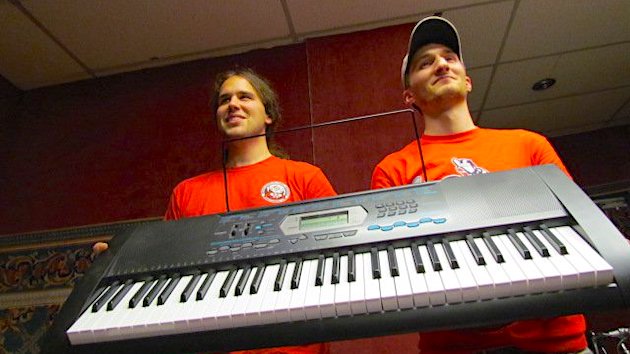
One of the things that flexibility has meant to the duo is that they can commission musicians and work with groups in ways that would be impossible for other classical organizations. They have sought to put themselves in unusual sites, like a fishing boat or the remains of the Sutro Baths. They have been eclectic, but have not neglected non-white, non-cis perspectives, having worked with M Lamar, Raven Chacon, Sean San Jose and Youth Speaks, and composer/guitarist Zach Watkins.
For us, it’s important to question the space we take up as white, cis men: and that’s not just who we commission, it’s who’s onstage, who takes a bow, where does the money go?” says Meyerson. “Who really has the agency in these interactions? What does our institutional structure look like? All of those things are really important in determining what our job is, and if our job is to create work that reflects and responds to the world, then the world as it is needs to be represented in those decisions and that work.
“It’s extremely important for us to use the platform we are given by virtue of how we look in the service of giving back to people who would be kept out [by many organizations] and to let them do literally whatever they want with that. What that means for us is adapting our toolbox to be the best use to those artists. Like, our piece with M. Lamar wasn’t traditionally notated, it was a lot of adjectives and text and we built it together collaboratively.”
It’s just a duo, but you have the sense that TLES is moving in the right direction. The future belongs to the flexible.

